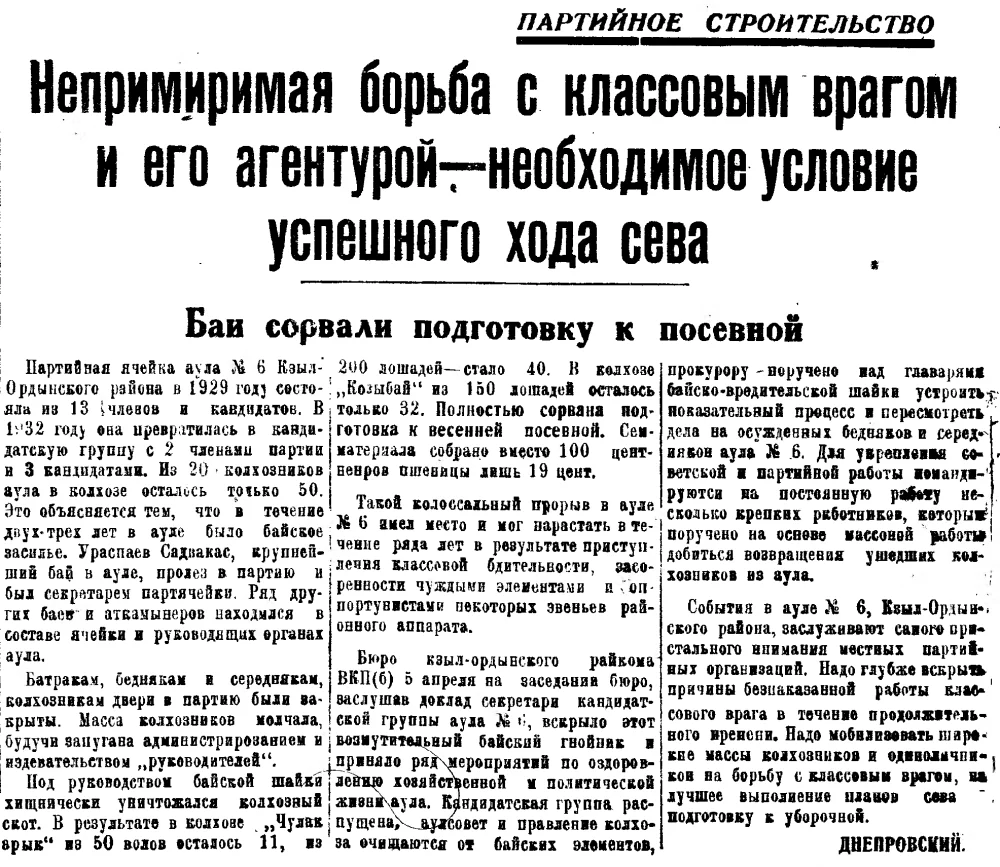As the nineteenth century gave way to the twentieth, a great wave of awakening surged through Kazakh intellectuals, sparking a passionate quest for knowledge. This outpouring of intellectual zeal led to an explosion of new magazines and newspapers being published in Kazakh, heralding the dawn of a new era in sharing culture. However, what these intellectuals wrote went beyond only spreading knowledge. Soon, a variety of publications emerged, covering topics like business, society, politics, art, and humor. Qalam invites you to explore snippets from Kazakh publishing culture and history, offering a glimpse into the important issues of the past.
During the widespread famine in Kazakhstan in 1932–33, as it did in other regions of the Soviet Union, official Soviet propaganda turned against the affluent segments of the population, accusing them of sabotaging collectivization policies and hindering the advancement of Soviet power and progress. In the Kazakh steppe, the bais, wealthy livestock owners and large landowners, were portrayed as the primary ‘class enemies’ and ‘exploiters’. They were blamed not only for significant livestock losses but also for disrupting sowing campaigns. A vivid example of such ideological agitation is an article titled ‘The Bais Sabotaged Preparations for Sowing’ published in the newspaper Kazakhstanskaya Pravda in April 1932.

Kazakhstanskaya Pravda/From open access
The Bais Sabotaged Preparations for Sowing
In 1929, the party cell of Aul No. 6 in the Qyzyl-Orda district consisted of thirteen members and candidates. By 1932, it had transformed into a candidate group with only two party members and three candidates. Out of twenty collective farmers in the auli


For farmhands, poor peasants, and middle peasants who were kolkhoz members, the doors to the party were closed. The majority of collective farmers remained silent, intimidated by the administration and mistreatment by the ‘leaders’.
Under the leadership of the bai clique, kolkhoz livestock was plundered and destroyed. As a result, the kolkhoz Chulan Aryq saw its oxen population drop from 50 to 11 animals, and its horses from 200 to 40. In the kolkhoz Qozybai, only 32 horses remained of 150. Preparations for the spring sowing campaign were entirely disrupted. Instead of the planned 100 quintals of wheat seed material, only 19 quintals were gathered.
Such a colossal breakdown in Aul No. 6 took place and was allowed to persist for years due to a failure in class vigilance, infiltration by hostile elements, and the presence of opportunists in certain segments of the district apparatus.
In addition to arrests and show trials against the ‘bai-saboteur clique’, forced measures were undertaken to return residents who had fled the famine-stricken villages.
To strengthen Soviet and party work, several capable workers were assigned to permanent positions, tasked with conducting mass outreach efforts to ensure the return of kolkhoz members who had left the aul.
Kazakhstanskaia Pravda was the official organ of the Russian Communist Party (RCP) and the Central Executive Committee, first of the Kazakh Autonomous Socialist Soviet Republic (Kazakh ASSR) and, after 1936, of the Kazakh Soviet Socialist Republic (Kazakh SSR). The newspaper had been published since 1920 under various names, including Izvestiya Kirgizskogo Kraya, Stepnaia Pravda, and Sovetskaia Step, until it was renamed Kazakhstanskaia Pravda in 1932.




